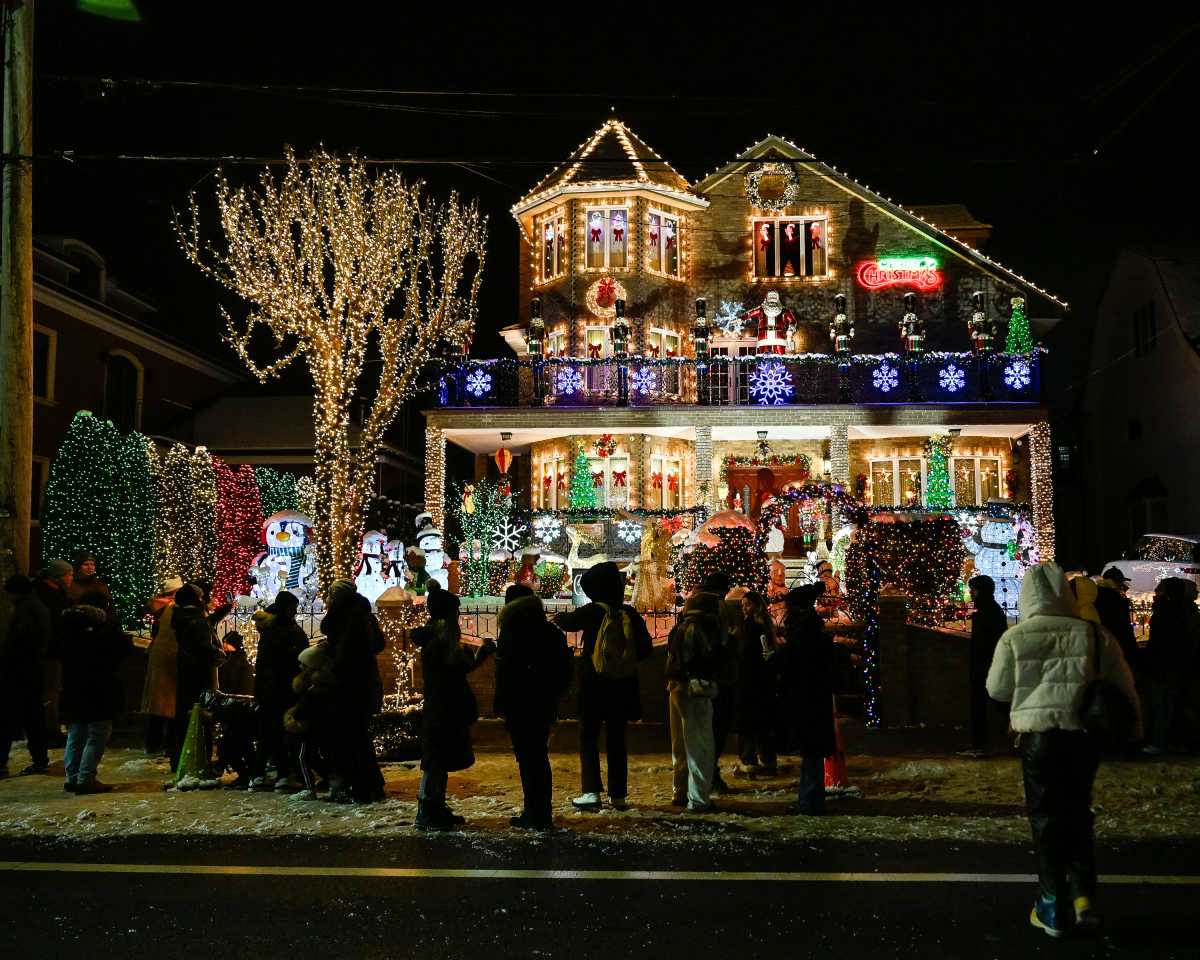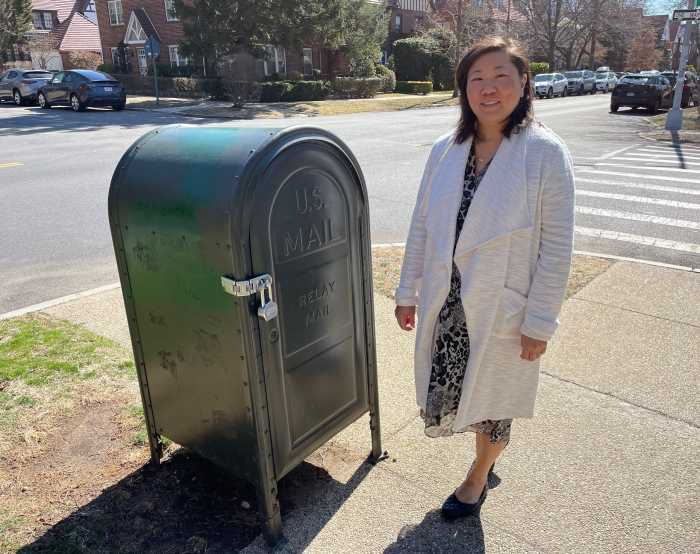By Lincoln Anderson
An architectural firm has mapped out a $10 million restoration for St. Brigid’s Church, and while the plans include repairing and replacing many parts of the 1849 building, new steeples are not among them.
The plans are currently going through the approval process at the Department of Buildings.
“It’s moving along full force,” said Michael Doyle, a principal in Acheson Doyle Partners Architects. Doyle spoke just a bit about the project recently with The Villager in a phone interview. A native East Villager, he grew up on 14th St. at Avenue A, and currently lives in Tribeca.
“It’s a significant structural challenge, as you can imagine,” he said of St. Brigid’s, at Avenue B and Eighth St. “That’s where the challenge lies.”
The biggest problem is the church’s eastern wall, which is partially detached from the building due to a huge crack.
Acheson Doyle have done other church restorations where they considered replacing missing spires, but it’s usually too difficult and costly, Doyle said. St. Brigid’s twin spires were taken down decades ago.
“The steeples could take away most of the budget,” he noted. “They were designed with different building codes.”
Asked if the yellowish stucco that at some point was applied to St. Brigid’s exterior would be stripped off to reveal the original stone facade, Doyle pointed to Old St. Patrick’s Cathedral, on Mott St., which had a similar facade situation that they restored within the last few years. Stucco was typically applied, he said, because brownstone tends to deteriorate rapidly.
The architect said he didn’t want to divulge more about the project without the Catholic Archdiocese’s permission.
Joseph Zwilling, the archdiocese’s spokesperson, said the work goes well beyond the damaged back wall.
“It’s not just stabilizing the church; it’s also going to involve a lot of work to the foundation to further stabilize the building,” he said. “It will also have to be brought up to code with Americans With Disabilities Act.”
Zwilling said steeples were discussed, but that putting them back would have involved increasing the building’s load-bearing capacity, too big a job.
So far, asbestos has been removed or encapsulated, he said. Now, they are focusing on shoring up the foundation.
The work will take “many months,” Zwilling said, at another point pegging it at a year. He added the archdiocese hopes to put the work out to bid imminently, and that there will be more than one contractor.
Zwilling said there was a recent senior staff meeting of the archdiocese’s building commission, which he attended, where details of the project were discussed. But he said there was no talk of the building’s facade, and that he didn’t see plans for the church’s windows then, either.
Any stained-glass windows from the church are in storage, Zwilling noted, and apparently will be put back.
“I believe that is the plan,” he said. “As I recall, there were only two or three.”
The painted-glass windows that a wrecking crew knocked out two years ago were worthless, he said.
“We had an appraiser come in and look at it and say what was valuable, what should be preserved,” he said. “Those painted-glass windows, in their mind, were not valuable.”
Sculpted faces that lined the church’s vaulted ceiling — some of them of the Irish boatwrights who built the church — were preserved, but Zwilling wasn’t sure if they will be restored to the church.
He doesn’t know where the pews are, but the organ was saved, he said. Though if it costs too much to fix, it might be better to put in a new organ, he said.
A new elevator will be installed between the basement and choir loft. The church will also have new air conditioning and heating, Zwilling said. A reredo, a decorative screen, will be restored and put back behind the altar.
“It will be in beautiful shape once it’s back open,” he assured. “It will be a functioning parish church.”
Asked if St. Brigid’s will incorporate any Irish famine memorial aspect, Zwilling said, “That’s not part of the plan.”
One neighbor, requesting anonymity, said he wishes the spires are put back, even if they’re just fiberglass.
“I hope this is a restoration — not just repairs,” he said.
Zwilling said after the contracts are awarded, the restoration plans could be made public. He said it would be most important to share them in a parish meeting first or through a newspaper — “Either one might be a possibility,” he said.
Asked if the local community board might also be granted a look, he replied, “I’m not going to say we wouldn’t go to the community board, but our focus is on the parishioners, the people for whom the church is being built.”





































